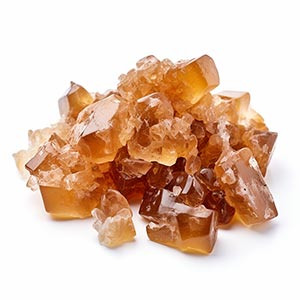Benzoin, a resin derived from the Styrax tree, has been a cherished ingredient in perfumery for centuries. Its rich history can be traced back to ancient civilizations, where it was used in religious ceremonies and as a precious offering. In perfumery, benzoin is valued for its warm, sweet, and vanilla-like scent, which adds depth and complexity to fragrances. The use of benzoin in perfumery became prominent in the Middle East, where it was treasured for its balsamic and comforting aroma. It made its way to Europe through trade routes, becoming a staple in both oriental and occidental fragrances. Benzoin's sweet and resinous notes are often used to create warm and opulent accords in perfumes. Benzoin has been associated with various cultural and spiritual practices. In ancient times, it was believed to have purifying and protective properties, making it a popular incense ingredient. Today, benzoin is a key component in many classic and modern fragrances, contributing to compositions that evoke a sense of warmth, sensuality, and sophistication.
Natural or Synthetic?
The natural extraction process of Benzoin involves intentionally damaging the bark of Styrax trees to stimulate the flow of resin. This resin is then collected, dried, and processed. However, obtaining natural Benzoin can be expensive and challenging. As a cost-effective alternative, synthetic Benzoin is created in a laboratory using various ingredients
Fragrance Families Benzoin Most Commonly Found In
Show fragrances that contain Benzoin as a note



